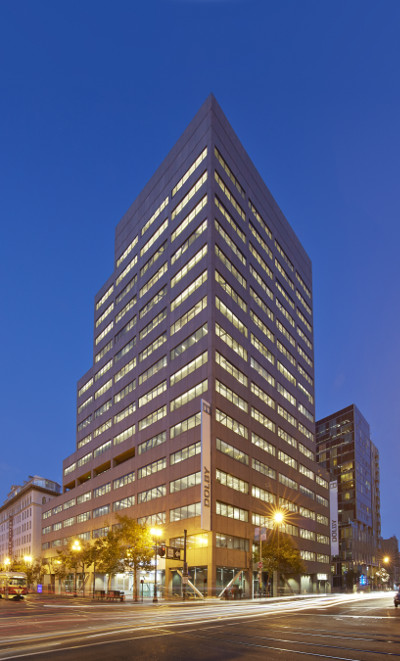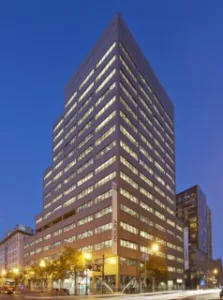Dolby Laboratories invited a number of industry analyst to spend the day with them in San Francisco showing off technology and discussing their business. It was an open and informative day.

First, Dolby is doing well. We met in the company’s new headquarters building on fashionable Market Street in downtown San Francisco. It is a 16-storey building (with three basement floors) with over 100 labs that brings together over 750 employees under one roof. A full-sized Dolby Cinema for 200 people is under construction for the site. Dolby also installed 36 unique pieces of art throughout the building to help inspire creativity.

In a lunch meeting with the company’s CFO, we learned that Dolby had $970M in revenue in the last year and 90% of that is from licensing. The remaining 10% comes from the sale of sound processors to theaters, professional monitors and some services. But that ratio is expected to change going forward, as we will explain.
Licensing revenue is always derived at the playback device. That means playback of Dolby-processed audio and video with the device maker paying a per unit royalty. To support this, Dolby works with content creators, chip set makers and other parts of the delivery chain to help ensure that Dolby processing is adopted and integrated into playback devices. Dolby earns no revenue in these endeavors – only on playback. Perhaps 45% of this licensing revenue is from TV and set top box makers. Mobile is on their radar, but there’s not much to report at this time.
Dolby is focused on execution of three main initiatives. These are Dolby Cinema, Dolby Vision and Dolby Voice. (see separate articles: Dolby Cinema and Dolby Vision Demos During Analyst Day and Dolby Showcases Audio Solutions on Analyst Day) This means that sales and marketing cost are now significant (about 25% of revenue). R&D continues to garner about 20% of revenue.
With Dolby Cinema, the company has developed a new business model to support the roll out of these theaters. The theaters are a new design that starts with a hallway of projected images that set the mood for the movie you are about to see. It starts you down the path to an experience that includes a high dynamic range projector and immersive sound solution (Atmos). The theater has been designed with great attention to detail and must be built to Dolby’s specifications.
In the Dolby Cinema business model, the exhibitor pays to renovate the space in line with Dolby’s requirements. Dolby then installs its equipment at its expense, which will include maintenance and upgrades as they come along. The two then split a portion of ticket sales. This revenue is not expected to be very significant in the near term and in fact will require considerable investment on Dolby’s part as the equipment is quite expensive. But it is a source of revenue.
Dolby Vision is the company’s high dynamic range solution. The first TV with a revenue-generating chipset in them is the Vizio Reference series, but expect more to be announced at CES. Several TV SoC makers have integrated the technology, making it possible for TV makers to offer this as a premium HDR solution.
Dolby Voice is a new solution that we had not seen before, but which is quite impressive. It is a voice teleconferencing solution that does a remarkable job of filtering voices from what the microphones pick up to deliver crisp voice quality. So far, Dolby has partnered with British Telecom to roll out the service to corporate clients. They sell a conference room phone for $1600 and derive additional revenue by charging customers a per minute use fee.
We also received demos of all three of these key initiative technologies along with some development initiatives (see separate story: In the Labs at Dolby). Dolby is a company that works extra hard to nurture the whole ecosystem for each technology from content creation through distribution to playback. They have top flight scientists and engineers and we have always been impressed with the quality of their solutions. Now, it is time to execute on these three major initiatives. – CC

